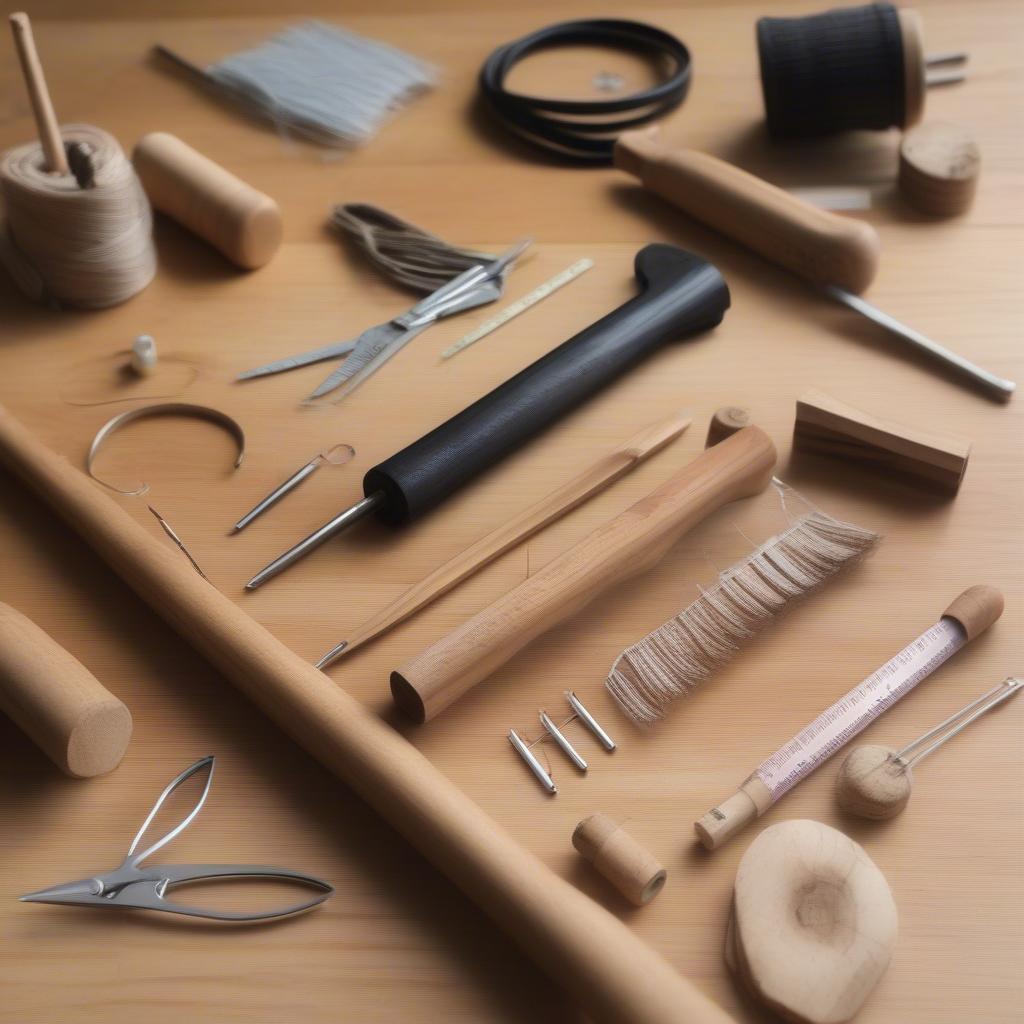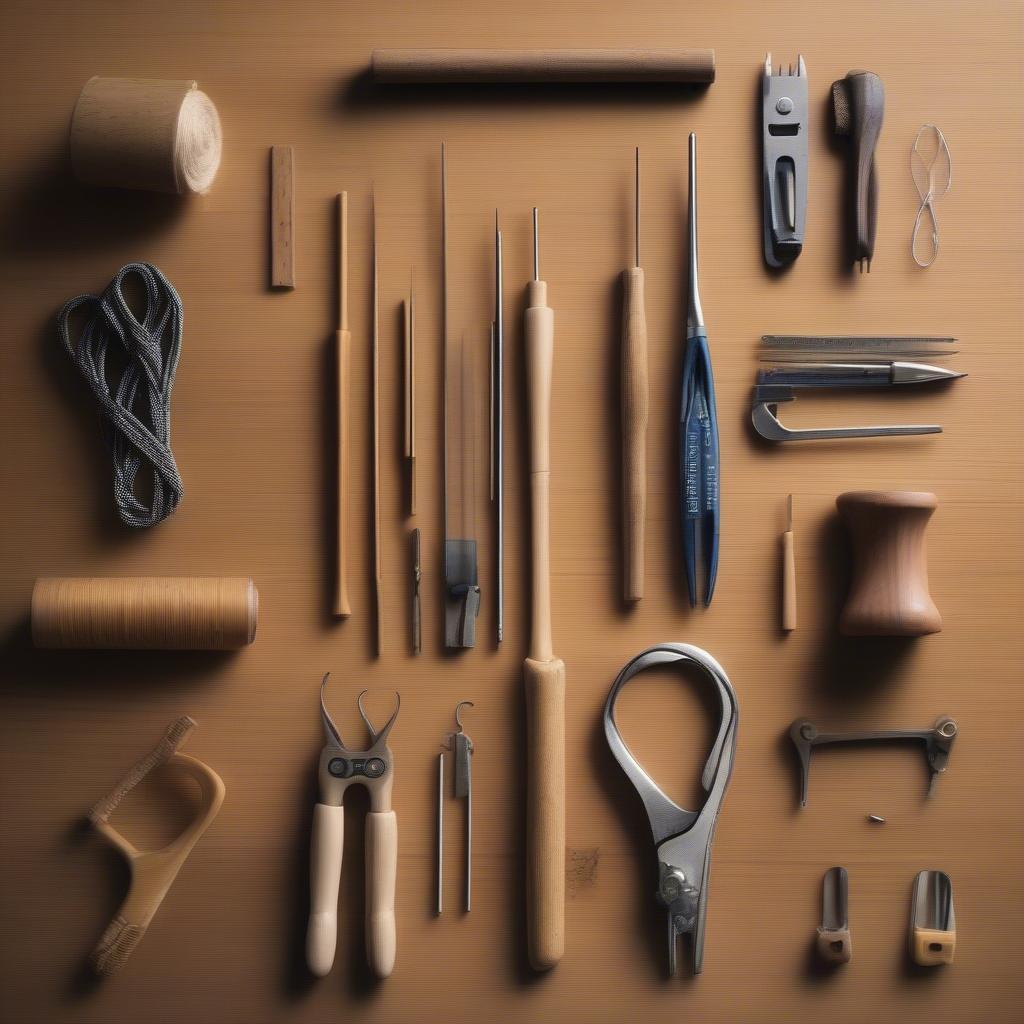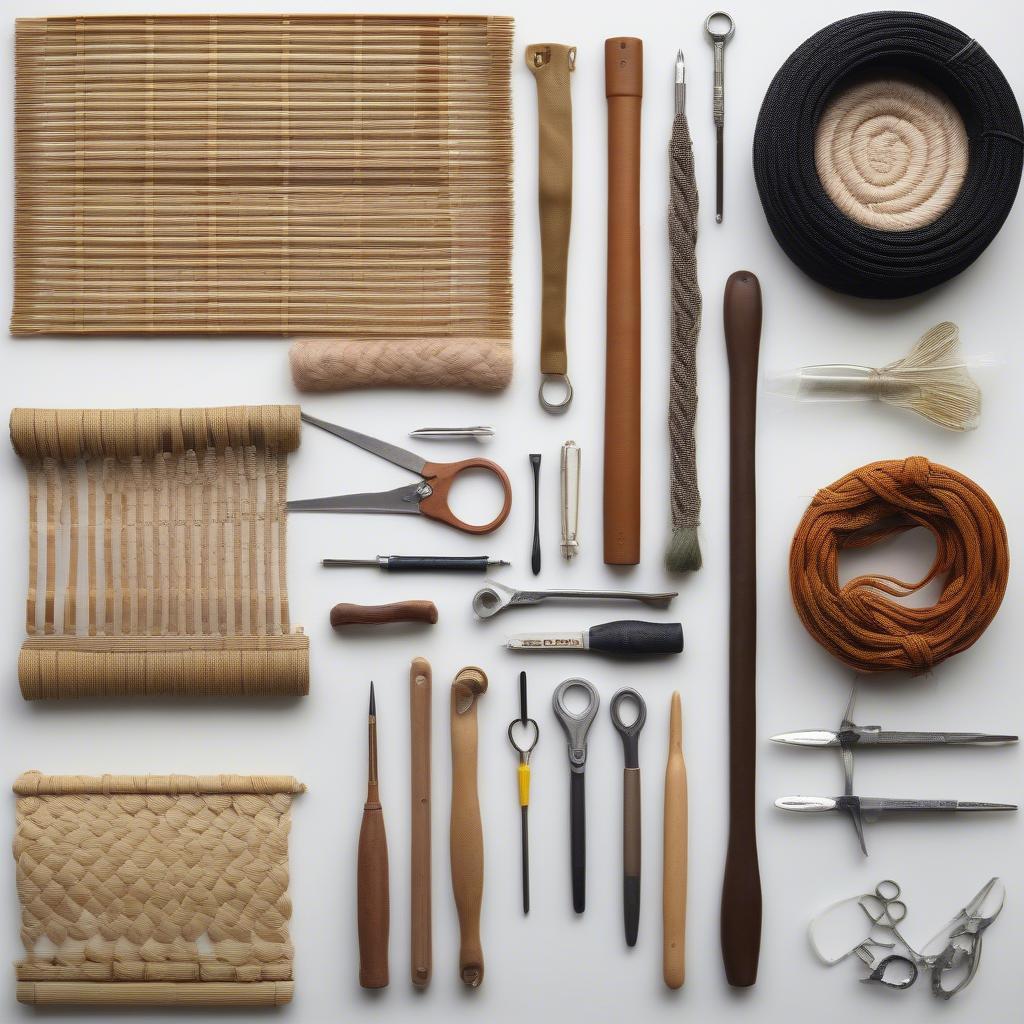Weave Chair
Essential Chair Seat Weaving Tools: A Comprehensive Guide
Chair seat weaving is a rewarding craft that blends tradition with creativity. Whether you’re restoring a cherished antique or adding a unique touch to a modern piece, having the right Chair Seat Weaving Tools can make all the difference. This guide will explore the essential tools you need to master this craft, from basic to specialized.
Understanding Your Chair Seat Weaving Toolkit
 Basic Chair Seat Weaving Tool Kit
Basic Chair Seat Weaving Tool Kit
Before diving into specific projects, like rush chair weaving, it’s crucial to assemble a well-rounded toolkit. These tools are the foundation of your weaving journey and will help you achieve professional-looking results.
Essential Tools for Beginners
- Weaving Needles: These long, blunt needles are designed to thread various weaving materials, such as rush, cane, and cord. Choose a variety of sizes to accommodate different materials and weaving patterns.
- Awl: This pointed tool is used to create holes, widen existing ones, and manipulate weaving materials. A sturdy awl with a comfortable grip is essential.
- Fid: A fid is a conical tool used to open slots in cane webbing, making it easier to insert new cane. It’s invaluable for certain types of cane weaving.
- Mallet: A rubber or wooden mallet is used to gently tap weaving materials into place, ensuring a tight and even weave. Avoid metal mallets, as they can damage delicate materials.
- Measuring Tape: Accurate measurements are crucial for planning and executing your weaving projects.
- Scissors: Sharp scissors are necessary for cutting weaving materials cleanly and efficiently.
Specialized Chair Seat Weaving Tools
 Specialized Chair Seat Weaving Tools
Specialized Chair Seat Weaving Tools
As you progress in your weaving journey, investing in specialized tools can enhance your work and open up new possibilities, even for projects like weaving chair cane back.
Tools for Advanced Weavers
- Spline Roller: This tool helps to insert spline, a thin strip of wood used to secure cane webbing in the frame.
- Cane Stripper: Used to create uniform strands of cane from wider pieces, ensuring consistency in your weaving.
- Pliers: Different types of pliers, such as flat-nose and needle-nose, are useful for gripping and manipulating weaving materials in tight spaces.
- Beveler: A beveler is used to create angled edges on spline, ensuring a snug fit within the frame.
“Having the right tools not only makes the weaving process smoother but also allows you to achieve a higher level of craftsmanship,” says renowned furniture restorer, Amelia Carter. “Invest in quality tools, and they will serve you well for years to come.”
Choosing the Right Tools for Your Project
 Choosing Chair Seat Weaving Tools for Different Materials
Choosing Chair Seat Weaving Tools for Different Materials
Different weaving materials require specific tools. For instance, paracord weaving for chair projects may require different tools than those using traditional materials.
Material-Specific Tools
- Rush Weaving: Sturdy needles and a good awl are essential for working with rush.
- Cane Weaving: A fid, spline roller, and cane stripper are invaluable for cane projects, even when you use pre-woven cane like discussed in how to weave a chair with pre woven cane.
- Paracord Weaving: While many standard weaving tools can be used, a lighter or heat sealer is necessary to finish the ends of the paracord, as shown in weaving a chair seat with paracord.
Maintaining Your Chair Seat Weaving Tools
Proper maintenance extends the life of your tools. Keep them clean, dry, and sharpen blades regularly. “Regular maintenance is often overlooked but is crucial for ensuring your tools perform optimally,” advises John Smith, a seasoned chair maker. “A little care goes a long way in preserving your investment.”
In conclusion, having the right chair seat weaving tools is paramount to achieving beautiful and durable results. Whether you’re a beginner or an experienced weaver, investing in quality tools and maintaining them properly will enhance your crafting experience and elevate your creations.
FAQ:
-
What is the most important tool for chair seat weaving? A sturdy weaving needle is arguably the most essential tool.
-
Do I need specialized tools to start chair seat weaving? No, a basic toolkit is sufficient for beginners.
-
How do I sharpen my weaving needles? Use a needle sharpener designed for blunt needles.
-
Where can I buy chair seat weaving tools? Craft stores, online retailers, and specialized woodworking suppliers.
-
What type of mallet should I use? A rubber or wooden mallet is recommended.
-
How do I clean my tools? Wipe them down with a damp cloth after each use and remove any debris.
-
What is a spline roller used for? It helps insert spline into the chair frame to secure cane webbing.
For further information on different weaving techniques, see our guides on rush chair weaving and weaving chair cane back.
Need assistance? Contact our 24/7 customer service team at +84 388 951 999 or visit us at Hanoi, Vietnam, or Tech Avenue, Suite 12, San Francisco, CA 94105, USA.
